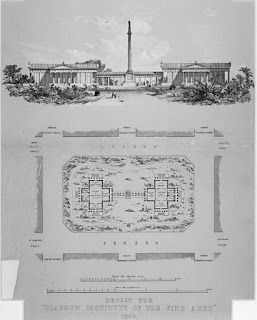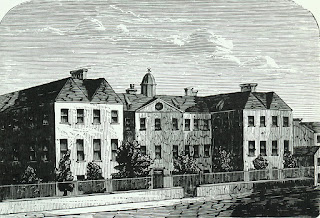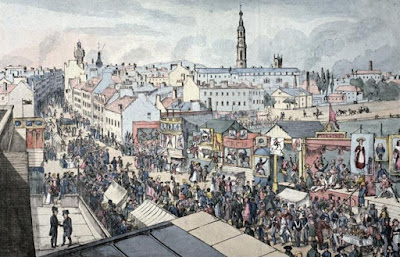
Archiepiscopal palace. ( or Archbishops Castle) Glasgow This venerable relic of the “ olden time,” was the town residence of the Archbishops of Glasgow,for many centuries the proud scene of their feudal grandeur and magnificence. It stood immediately to the west of the Cathedral, which is situated in an elevated part of the Town. The castle stood where the royal infirmary stands today. During the turbulent period of the feudal ages, when 'power'was the only law, and the mandates of governments were but little attended to, because they seldom could be enforced; when every feudal lord sought the preservation of his own rights, and, so far as he could, the redressing of his own supposed wrongs, the great objects to be attained in domestic architecture, were strength, and the power of resistance. The clergy, during these ages, notwithstanding their professions of piety and humility, were as ambitious, and fond of power as the most rude and warlike of the iron-clad barons; and n...















